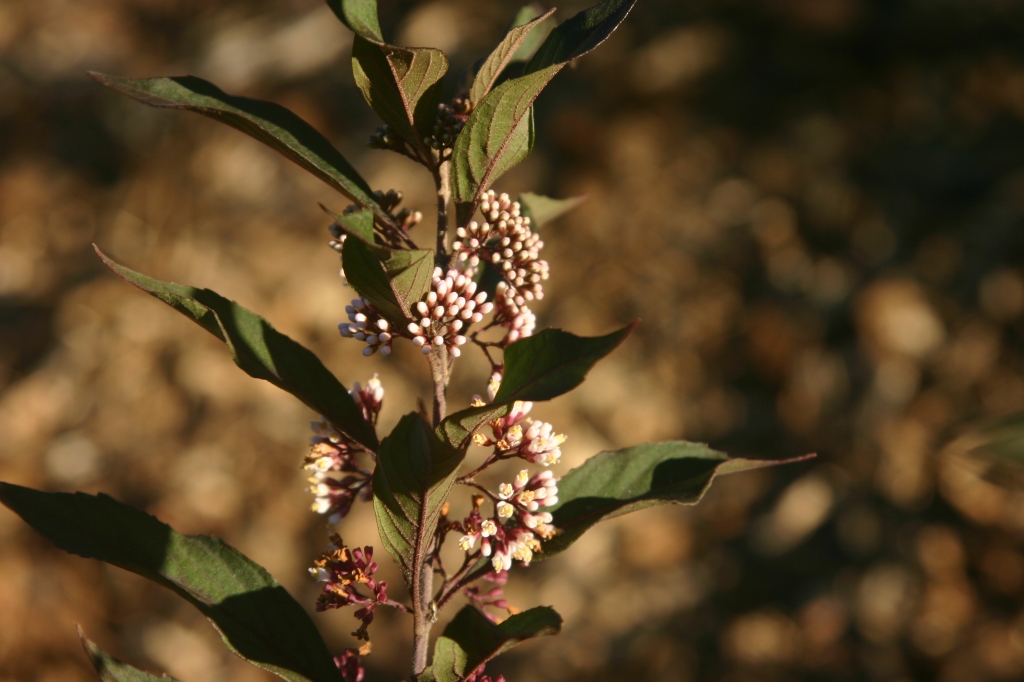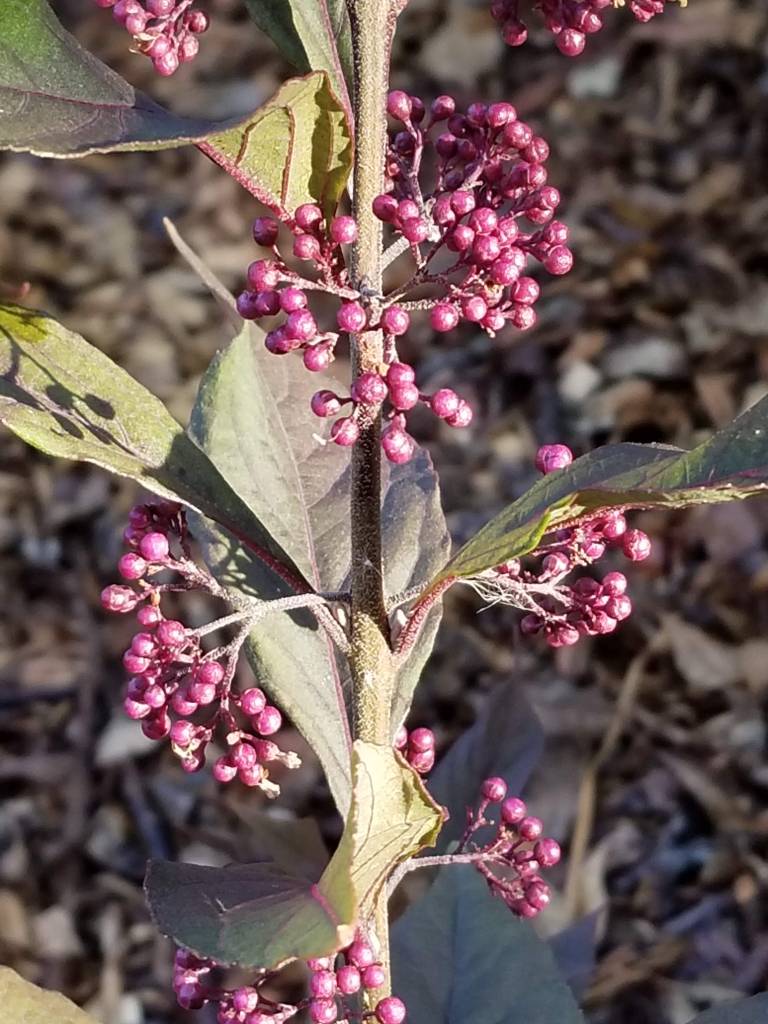The stunning reds, oranges, and yellows of maples and oaks make even the city-bound go for a country drive in autumn. The leaf colors of trees and shrubs have been exceptionally splendid this year. But fall color can also relate to fruit, and few displays are better than the lustrous fruit of Callicarpa, commonly known as beautyberry.
Callicarpa, from the Greek word meaning “beautiful fruit,” is a genus of shrubs and small trees of the mint or sage family known as the Lamiaceae. It contains approximately 165 species, most of which are native to Southeast Asia, but are also found in Australia, Southeast North America, and South America. Those found in temperate regions drop their leaves in the fall, while tropical species are evergreen. They are relatively pest free and easy to take care of. Before growth begins in the spring, cut the entire plant down to a height of four to six inches. The fruit display will not be affected since flowers and fruit are produced on new growth. Give the plants as much sunlight as possible and they will reward you with an eye-catching fruit presentation in the fall.
Several species are commonly found in the nursery trade. Callicarpa americana, the American beautyberry, is found in the Southeast United States, growing to a height of three to six feet. The purple berries ripen in September and October and are quickly eaten by songbirds such as cardinals, finches, and woodpeckers. Derivatives from Callicarpa were used by Native Americans as a remedy to prevent mosquito bites. In fact, four chemicals isolated from Callicarpa have been shown to act as insect repellants, including callicarpenal, which has been patented in the US as a mosquito repellant. More recently, a compound has been isolated from American beautyberry leaves which, in combination with oxacillin, is able to treat a drug resistant strain of bacterial infection known as Methicillin-resistant Staphylococcus aureus (MRSA).
I grew Callicarpa americana in the Illinois Central College arboretum when I taught at the college, but was less than impressed with its growth habit and fruit display. Perhaps this was because it was in less sunlight than ideal, or because the plant was not hardy enough to withstand the Central Illinois winters of 40 years ago. The plant is listed as zone 6 hardy, which would make it marginal, even in Peoria, Illinois.
Callicarpa bodinieri, Bodinier’s beautyberry, native to west-central China, is more winter hardy than Callicarpa americana. It grows to a height of 10 feet and has the bonus characteristic of displaying red leaf color in the fall. Its cultivar, ‘Profusion,’ has received the Royal Horticultural Society Award of Merit. Unfortunately, it is not readily available in the nursery trade.
Callicarpa dichotoma, the purple beautyberry, native to Japan, China, and Korea, is most often found at garden centers. It grows two to four feet tall with arching branches. The pink to white inconspicuous flowers are followed by lustrous, abundant purple fruit. I grow the cultivar ‘Early Amethyst,’ which grows three feet tall and has amethyst hued fruit starting in late summer and continuing through October. As the name implies, the fruit display starts earlier than that found in other beautyberries. We grow this plant in our garden’s ‘purple bed’ next to our purple-painted shed. Other plants in the area are ‘Purple Haze’ maple and ‘Amethyst’ witchhazel. Amethyst is my wife Terry’s birth stone and one of her favorite colors!
Two years ago, I obtained a hybrid beautyberry called Pearl Glam® and, so far, have been very impressed with it. A hybrid crossing Callicarpa dichotoma with Callicarpa kwangtungensis, it has purple foliage, white flowers, and violet-purple fruit, and will eventually reach a height of four to five feet. Unlike ‘Early Amethyst,’ it has a more upright growth habit and sterile seeds, and thus will not invade other areas of the garden.
Fruit display on your garden plants is another way to extend color in the garden, while also feeding our feathered friends. Other shrubs to consider for this trait are winterberry holly (Ilex verticillata), American cranberrybush viburnum (Viburnum trilobum), and red and black chokeberries (Photinia, also called Aronia). Like Callicarpa, they all place the beauty of their berries on display.








